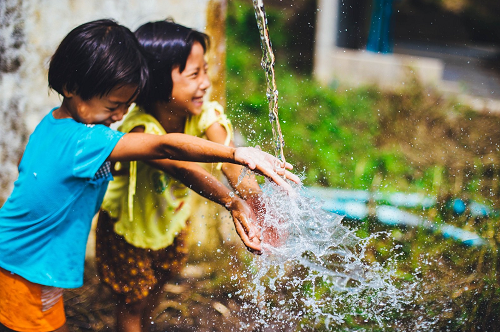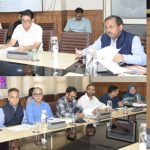Background
Water is one of the fundamental elements that sustains and shapes societies’ growth, development, and social fabric. Enabling fair access to safe drinking water is the bedrock of any just economy; ensuring an even and enough supply of safe drinking water remains a serious policy concern in India’s urban and rural areas that are witnessing a fast transition and serve as an example of conflict between deficient supporting infrastructure and mounting demand for safe water. This article highlights why equity matters in water governance and informs the threat posed by various policy pitfalls on the vulnerable population. It also explores various structural impediments to the universal accessibility of safe drinking water in India and presents policy recommendations to overcome the identified policy tensions related to the last-mile delivery of safe drinking water.
Conventionally water has been recognized as a Common Property Resource (CPR). Policymakers emphasized the accessibility of water to all with a focus on subsidies and other supply-related alternatives. The limit-free extraction and overexploitation led to the emergence of the problem of the “Tragedy of Commons”. Water is necessary for the sustenance of living beings and various economic activities. The significant role of water as a necessary condition for living and sustaining various types of economic activities makes it pertinent to investigate the equity of present reach to water. The availability of safe drinking water is tantamount to money to ensure socioeconomic well-being. However, the dissemination of water is not fair and impartial like other natural endowments across various human habitations and various strata of the population. This has fetched the attention of most contemporary water scholars towards the “concern for water justice.”
The worldwide acknowledgment of accessibility to potable water as a basic right was well highlighted in the United Nations General Assembly (UNGA) resolution in July 2010.The right to water facilitates an individual or a community with safe and affordable water for multiple purposes. The clear-cut adherence to water as a human right was reaffirmed by the United Nations members in September 2015 by their allegiance to securing the accessibility of safe drinking water as Goal 6 of the Global Agenda for Sustainable Development. Yet, there is a long way to walk to achieve the SDG targets of water and sanitation, as over two billion people on earth are still deficient in safe drinking water services.
India is witnessing the toughest water crisis of the times as 600 million people encounter severe water stress, and 200000 humans lose their lives annually due to lack of access to safe water. It is anticipated that the country’s water demand will double the available supply by 2030. This indicates the vulnerability of a huge chunk of the population to the safe drinking water crisis that leads to the generation of other relational vulnerabilities like health and livelihood.
Existing Mechanisms and Challenges
The union and state governments, along with the courts in India, have taken many policy steps and decisions over time that acknowledges the constitutional status of the right to water. In the Hamid Khan case, the court verdict confirmed that it is the responsibility of the state towards all its citizens to facilitate safe drinking water under Article 47 of the Indian constitution. The same recognition was reflected in the verdict of Vishala Kochi Samithi vs.the State of Kerala case. The court publicized the fact that the failure of the state to provide safe drinking water to its citizens in a sufficient manner will result in the encroachment of the fundamental right to life under Article 21 of the constitution of India. Any state that prioritizes the rights of its citizens should prioritize the essence of equal access to safe drinking water in its policy. In India, except in a few rare cases, the right-based approach to accessibility of water has not been reflected in the state or central policy. There needs to be a general outline of principles specific to equitable access to safe drinking water, followed by a comprehensive policy framework that applies to the supply of safe drinking water throughout India. A farsighted drinking water framework and law across the lines of human rights to water can address this limitation.
The complicated nature of the water distribution in India, coupled with the existence of various sectors and subsectors representing heterogeneous priorities of important stakeholders has led to rival interests. The requirement for water is planned against the underlying factors of overpopulation, growth of industrial and agriculture sectors, severe climate change events, and inequitable access to safe drinking water. India has been very concerned about the accessibility to water since its development in the 1950s. However, this has yet to help the people belonging to socially backward classes to reap the benefits of common water supply schemes at their places of origin. The government of India targets to provide piped water at the household level to every Indian household by 2024 under the Jal Jeevan Mission, but this mission misses out on the major focus of building human capabilities and the necessary infrastructure to distribute safe water to all.
Additionally, there is evidence that hand pumps gain rust and corrode when installed in soil or groundwater with high levels of salinity, but they continue to be installed. It is crystal clear, till the time the Indian water sector doesn’t undergo a just transition, the people who lack access to safe drinking water will continue to remain in the direct or indirect vulnerability net. The current water concerns of India are largely due to disintegrated governance, lack of water finance, and the absence of a multi-layered policy set-up. Furthermore, there is an immediate requirement to shift the focus of current water policies from the supply side towards demand handling.
Way forward
Developing a blended water resource management system will aid in addressing the issues of stakeholders at accurate levels. This can result in the independence and building of plausible and future-centric water strategies in India’s policy-making space. Stakeholder involvement can be a great step towards overcoming geographical and institutional compartmentalization in the water sector. To achieve the water goal, players from several ministries, like national, regional, local, and basin levels, will need to work together to develop multidimensional, multigenerational, and trans-scalar methods. For excellent practices in the water sector to be shared globally, global knowledge and operational experience must be better integrated.
Finally, there is a dire need for a place-based approach where organizational and financial resources are deployed as per the need and priority. The implemented strategies should always be flexible, adaptive, and viable. Further, the targets of SDG 6 provide developing economies with a threshold and convention for success that is both ambitious and practical. As a result, a country like India requires sophisticated evaluation methods to track the efficacy of its policies and institutions in achieving water goals with the desired outcomes.
(Author is presently working as a predoctoral researcher with the Thomas Schmidheiny Centre for Family Enterprise at the Indian School of Business Hyderabad. Email: [email protected])








